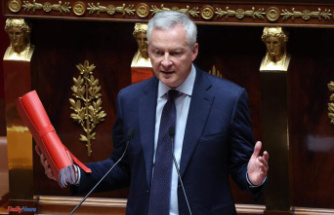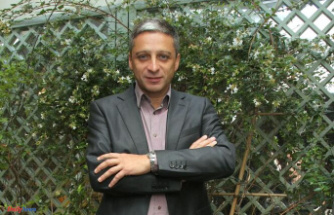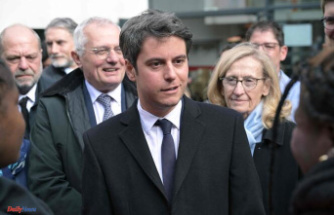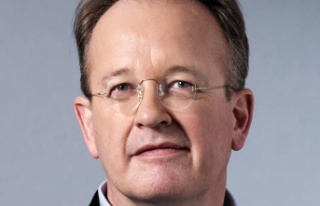Somewhere in this country there is a steel behemoth, about ten meters long, weighing almost 20 tons, which is why gas is pouring in in slugs elsewhere in this country. Actually, the device with the designation SGT-A65 belongs to the Portovaya compressor station near the Russian port city of Vyborg, 140 kilometers north of Saint Petersburg. This is where the Nord Stream 1 pipeline begins, which has been transporting gas to Western Europe for ten years, and the turbine in question compresses the precious raw material so that it can reach Lubmin, Mecklenburg-Western Pomerania. At least that's how it was last time, but in gas poker between Russia and Germany, the turbine from Siemens Energy is becoming an ace that nobody wants.
The latest twist in the farce that began for the public in mid-June: Gazprom, the Russian energy company, complains that the turbine was not delivered to Portovaya, but first to Germany. But actually, according to the deputy head of the state-owned company on Friday, they can only be accepted if there are guarantees from the EU and Great Britain that Western sanctions will not be applied. Exactly what he meant by that was unclear. In addition, the manufacturer Siemens has been asked several times to carry out repairs on other turbines on site. In short: From the point of view of Russia, sanctions and Siemens are to blame for the fact that only 20 percent of the possible gas volume is currently coming to Germany.
The allegations against the company are not new and have been boiled up again and again in different variants in recent weeks. At the end of June, Siemens Energy's supervisory board, Joe Kaeser, rejected them: "It's very convenient to involve a company that is well known in Russia." And further: "Even if it were, that would never justify throttling the gas flow so much," he said in an interview. Other experts also doubt that the lack of a single turbine should have such a big impact.
According to Mesit, co-operator of the Portovaya station, eight compressor units are in use on site, of which at least two serve as redundancy systems, i.e. as replacements. Despite regular maintenance, the steady flow of gas has not been disrupted to any significant extent in recent years. Of course, Gazprom knows that too. According to Vice President Vitali Markelow, the excuse is as follows: there are problems with three turbines, some of which have already failed several times, at the moment only one of six turbines is in use in the gas compressor station. Until recently, Kremlin spokesman Dmitry Peskov said: "If the turbine comes from repairs, then that allows for an increase in volume." What was meant was the volume of gas deliveries, which of course would not be used as a means of political pressure, as he asserted.
"What is happening here points to a political game by the Kremlin: The thumbscrews are being tightened more and more to keep prices and the pressure on local politics high." That's what the energy expert Georg Zachmann said in mid-June when the problem turbine SGT-A65 was reported for the first time. At that point, significantly less gas had been flowing from the east towards Germany for four weeks. For Wednesday, June 15, Gazprom then announced a further reduction in delivery volumes. Reason: Repair of the gas turbine, or the fact that the device could not be transported back to Europe from Montreal, where it was overhauled, due to the sanctions.
At this point, the sanctions argument was also true. But three weeks later, Canada released the turbine, with abdominal pain, as the government announced. "It was a tough decision," Prime Minister Justin Trudeau said on July 10. Nevertheless, his country will give "a time-limited and revocable permit" to Siemens Canada. The exception to the sanctions was justified by the fact that Vladimir Putin was trying to use his energy policy to divide the Allies against Russia's war of aggression in Ukraine. "We cannot allow that," said Canadian Minister Jonathan Wilkinson. The only condition: SGT-A65 will not be shipped directly to Russia, but to Germany.
While the Siemens people reacted in surprise and Chancellor Olaf Scholz applauded, Kyiv was angry: the government in the Ukrainian capital was "deeply disappointed," it said. For them, gas imports are tantamount to supporting Russia and its war of aggression. The excitement is understandable but premature. Because almost three weeks have passed since Canada's export license, but the gas turbine has disappeared. Or rather not in Portovaya on the Baltic Sea.
Because of the time pressure, the turbine was flown to a Siemens Energy location in Germany using a charter transporter. There it is being or was tested and is to be taken onward to Saint Petersburg, also by plane. Appropriate permits are also required for this. However, Gazprom recently announced that it does not have a single document allowing a gas turbine to be brought back from Canada. However, Gazprom would not be the addressee for such a paper, but rather Siemens Energy. There it says: "Our goal is to transport the turbine to its place of use as quickly as possible."
One of the reasons why there is only shy talk about the whereabouts of the turbine at Siemens is that although it was manufactured there, it no longer belongs to the company. The Munich company does not even want to comment on the exact type designation and function. She is responsible for technical support and maintenance, so Siemens Energy is a Gazprom customer and is politely holding back. According to the federal government, however, the device is ready to be returned to Russia.
What happens next is probably more a question of political will than of German engineering. In any case, the SGT-A65 is not technically necessary. And even if it caused problems, the Russians could use the Transgas pipeline via Ukraine if they wanted to. It still has free capacity.
Sources: DPA, AFP, "Handelsblatt", Mesit, Nord Stream, "Süddeutsche Zeitung"












